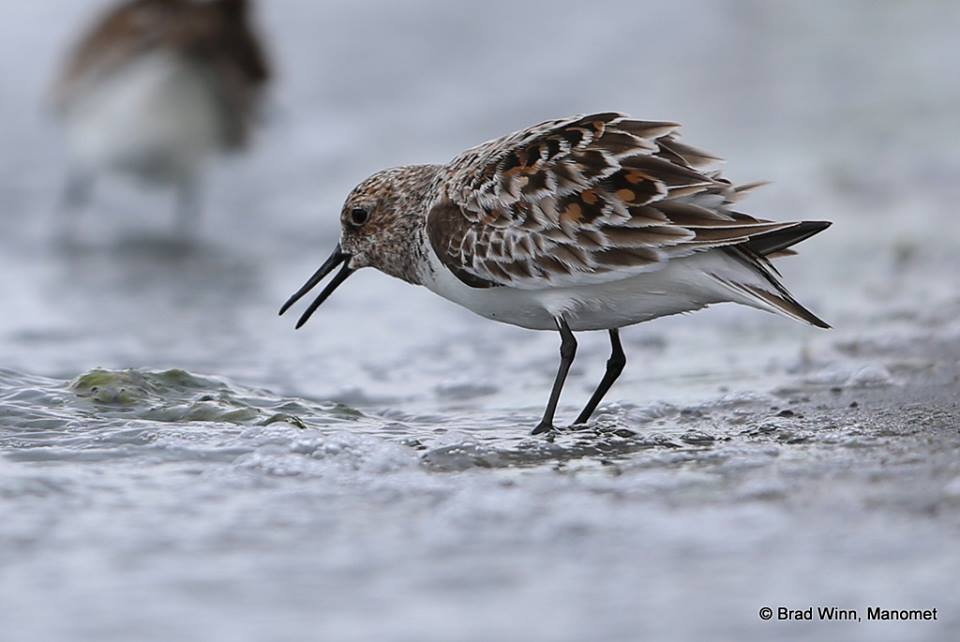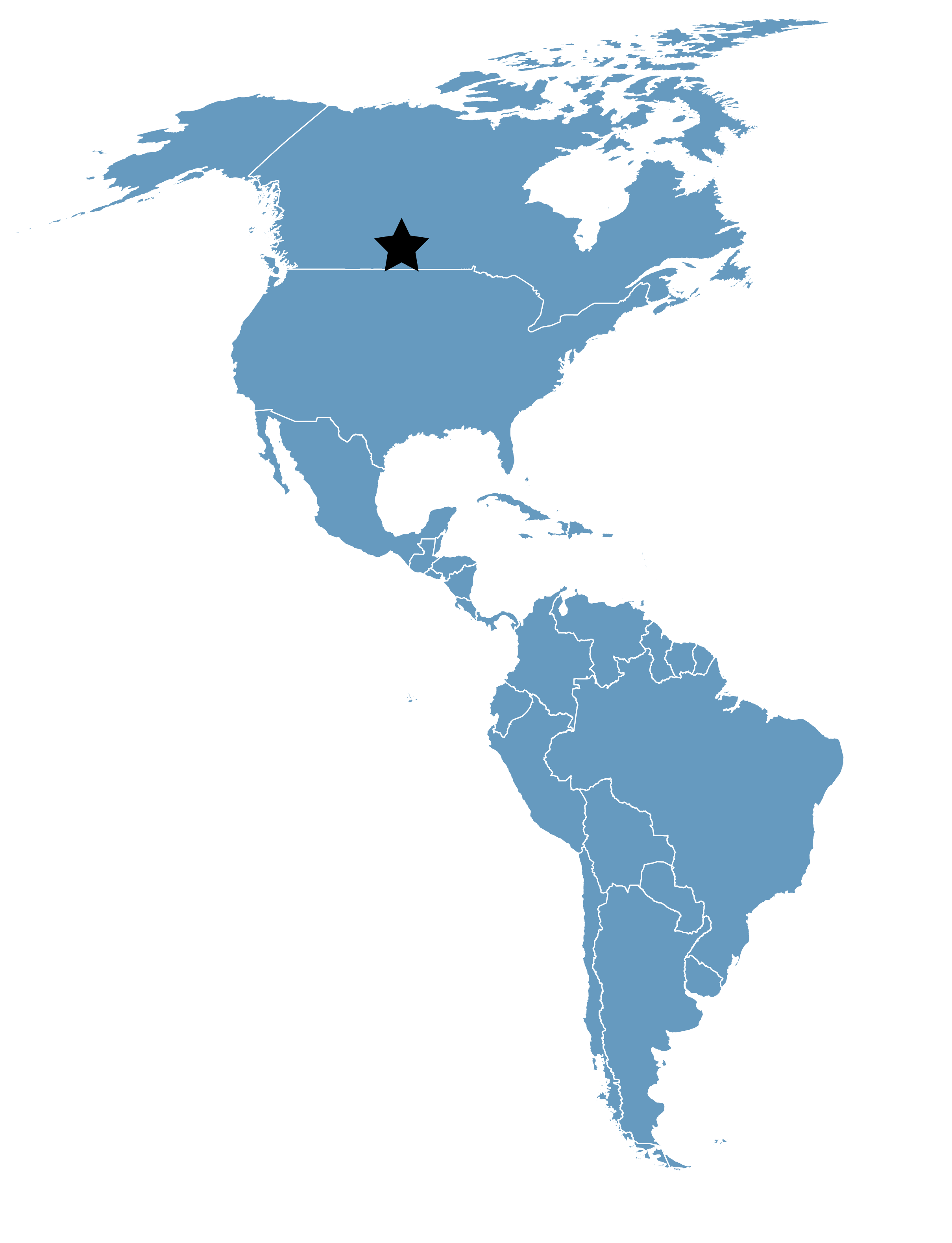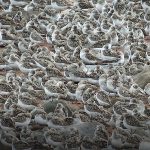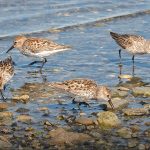Chaplin Old Wives Reed Lakes
Location
Saskatchewan, Canada
Category
Hemispheric
Basis for Designation
More than 100,000 shorebirds annually and more than 30% of all Sanderlings use the site as a spring migration stopover.
Size
42,680 hectares (105,464 acres)
Date Designated
April 1997
Site Owner
Government of Saskatchewan
Site Partners
Canadian Wildlife Service
Ducks Unlimited Canada
Saskatchewan Watershed Authority
Overview
Chaplin Lake is a large intermittent saline lake which is broken into a number of sections by a series of roads and dikes for sodium sulphate extraction. Water depth on various segments is regulated by activities of the solution mining operation as well as by natural precipitation and evaporation.
The Chaplin/Old Wives/Reed Lakes area is one of the most important inland sites for migratory birds in North America. This area spans over 42,000 hectares (100,000 acres) and is the second largest saline inland water body in Canada. More than 30 species of shorebirds, some endangered, stop or nest here every summer. Over half of the world’s population of Sanderlings rest and eat here before completing their journey to nest in the Canadian Arctic. The numbers of Stilt Sandpipers and Piping Plovers are also significant.
Over half of the world’s population of Sanderlings rest and eat here before completing their journey to nest in the Canadian Arctic.
Old Wives Lake is a large and relatively shallow, intermittent saline lake. It is characterized by severe seasonal water fluctuations which results in large expanses of mudflats due to the relatively flat aspect of the basin.
Reed Lake is a shallow, intermittent saline lake with large expanses of emergent vegetation, reed beds and shallow, flooded grassy shorelines. Areas of open mudflats occur on small segments of the shore.
These naturally occurring, inland lakes are located in the mixed-grass ecoregion of southern Saskatchewan. The soil conditions around Chaplin Lake and Old Wives Lake are most conducive to cattle grazing, thus pasture is the predominant land-use. Reed Lake, however, is surrounded by cultivated fields of cereal grain crop and some pasture land.
Shorebirds and Other Wildlife
All three lakes are used by shorebirds as feeding and roosting sites. The shallow sloping shoreline on both Old Wives and Reed Lakes provide ideal feeding sites for shorebirds. The various cells/basins of Chaplin Lake include freshwater basins for bathing/drinking while the salt basins are primarily used as feeding sites. Large concentrations of shorebirds have been observed using the dikes and islands on the west end of Chaplin Lake, as roosting sites during the day and in inclement weather.
The spring staging of Sanderlings at Old Wives and Chaplin Lakes is probably the key feature of this site. 55,767 birds were counted on 29 May 1994, which was the highest recorded count for a single day.
If we were to conservatively estimate a turnover rate of nine-ten days during the spring migration, then there would be an estimated use of the lakes by approximately 100,000 Sanderlings. The number of Sanderlings actually observed at Chaplin and Old Wives Lakes therefore represents a minimum of 50% of the flyway or west coast South American wintering population, or a minimum of 25% of the North American population. This percentage would be substantially higher if turnover rates were taken into consideration.

Breeding plumage of Sanderling are highly variable. Photo: Brad Winn
The peak counts of Stilt Sandpipers on these lakes during the 1994 spring migration totaled about 11,000 birds (minimum, given restricted access to Old Wives Lake). The Stilt Sandpiper population is estimated at 50,000+, thus given the counts on these three lakes during spring migration, is 22% of the population using the site.
The greatest use of the sites occurs during spring migration in May/June. The fact that there is a harvestable population of brine shrimp on Chaplin Lake may play a major role although the peak harvest of the shrimp occurs in late June/early July. There is some use of the area in the fall by migrant, arctic nesting shorebirds, but it is more intensively used as a staging area for local breeding birds. This is especially true after the young have fledged, as is evident by the high numbers of Wilson’s Phalaropes on Chaplin Lake in 1993 and 1994.
The site is of critical importance to other wildlife species. Migratory waterfowl, including various species of ducks, geese and swans, use all freshwater basins in this complex as a staging area in the fall. Nesting colonies of the following species occur on the islands of the three lakes, in the freshwater basins of Chaplin Lake, or in the marsh complex on the south end of Chaplin Lake: White Pelican, Double-crested Cormorant, Franklin’s Gull, and Western Grebe.









